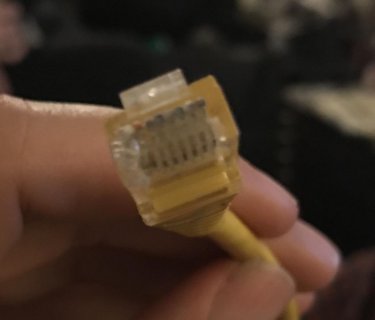BuffaloFan32
Well-known member
I was running the VideoDisplay script on two Teensy 3.2's and suddenly everything went blank. Upon restarting, I was unable to run the script again. It seems like the computer is not seeing the Teensy's as no new COM ports appear when I plug them into the USB port on my Windows laptop. I have another Teensy that I can plug into the computer using the same cable and it is recognized right away. Any idea what could have killed my Teensy's? At the time of failure, only one of the Teensy's was connected to the computer but they were both connected to my LED display. Both of them are soldered to Octo adapters and have their VIN pads cut so they are powered by the power supply that is powering the LEDs (the separate test Teensy is not connected to the LED array in any way). I tried uploading the Blink script to the dead Teensy's even though no COM port was available but it did not seem to work. Should I try anything else?
I am now afraid to connect my other Teensy's to the display. Any ideas on how to track down the problem? I am a novice so I do not have any formal training on these issues.
Any suggestions on how to protect the Teensy's from this happening in the future? I have a fuse in between the power supply and the positive terminal of the bus bar but I guess it did not blow. That brings up another question that I have, sometimes I see people put a capacitor or a resistor between the Teensy and the LED strip, do you still need to do either of those things if you are using an Octo adapter?
Is there any warranty on the Teensy or the Octo?
Thanks for your help!
I am now afraid to connect my other Teensy's to the display. Any ideas on how to track down the problem? I am a novice so I do not have any formal training on these issues.
Any suggestions on how to protect the Teensy's from this happening in the future? I have a fuse in between the power supply and the positive terminal of the bus bar but I guess it did not blow. That brings up another question that I have, sometimes I see people put a capacitor or a resistor between the Teensy and the LED strip, do you still need to do either of those things if you are using an Octo adapter?
Is there any warranty on the Teensy or the Octo?
Thanks for your help!


